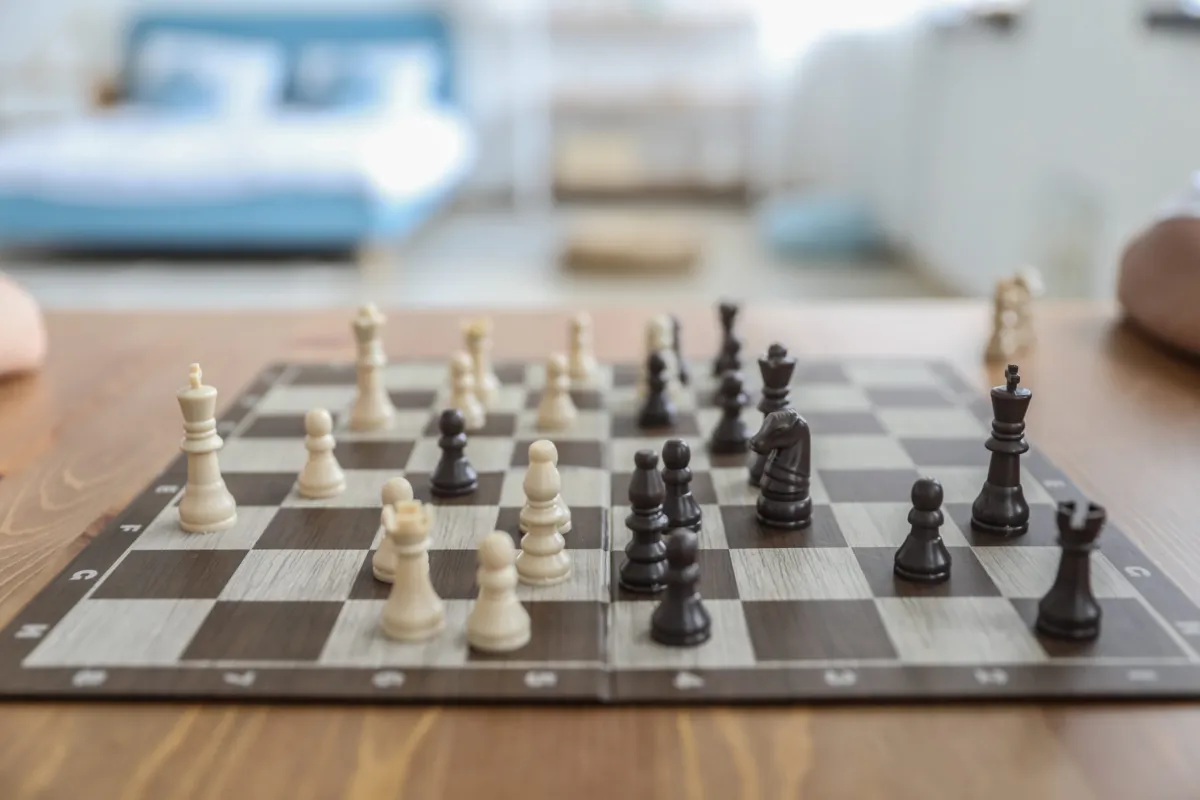A few thousand years ago, some enterprising individual placed a couple of black and white stones on a checkered slab. We are still suffering the consequences of this bold action today.
While chess continues to fascinate generation after generation of players, its developers’ laissez-faire approach to design and a positively glacial attitude to updates make it a somewhat awkward fit for the modern era of gaming. But its clean and classic design also offers a lot to like in an age of microtransactions and constantly reset rating ladders.
Easy to learn, hard to grandmaster

Chess is a simple game, at least according to people who spent decades studying its intricate complexities. Much like Dota 2, it may seem indecipherable to those watching without prior knowledge, but you don’t have to worry: It is just as indecipherable to those who do have this prior knowledge.
That said, chess still passes muster in the “easy to learn, hard to master” department. Sixteen white and black pieces are placed on an eight-by-eight checkered board, each with its own properties, with the goal of trapping the enemy king. (Fun fact: the term “shah mat,” the origin of checkmate, literally means “the king is dead.”) Utterly crushing your opponent’s ego along the way is just a nice little bonus.
You’ve got your lowly pawns, plenty and dispensable, with limited movement range but endless potential in the form of promotion on the other end of the board. Knights are tricky short-range hopping pieces, while bishops slice across the diagonals on one of the two colors. Rooks, meanwhile, reside on the rows and flanks, ever reliable and flexible, with the queen, powerful and dominating, combining the abilities of the previous two pieces. Kings are all-important yet impotent, indecisively stepping back and forth and up and down, one square at a time, immediately forced to flee the line of fire whenever an assault is lined up.
It’s thanks to this strong core set of design principles that chess has stood the test of time, despite its developer’s almost Nintendo-like efforts to change as little as possible. Super Smash Bros. Melee players would shed a tear thinking of their masters if they looked at the update regime for the royal game, which only sees the occasional tiny rule change every couple hundred years.
This conservative and controversial attitude inevitably leads to accusations of staleness (and the occasional stalemate), but even the literal thousands of years of collective human and machine study hasn’t rendered the game solved or moot, especially when our feeble non-silicon-based minds are involved, making it a massive and momentous struggle every time you sit down at the board.
Your moves matter (but your fancy PC setup doesn’t)

So you’re not going to get a lot of changes made to chess. But it’s exactly where the game’s incredible modability shines. There are enough variants to fill a Steam library with, from different time controls to 960 starting positions, special pieces, from ducks to fog, spells to Mittens, that you can always find yourself a new playground to explore whenever you get bored of the deeply-mined confines of the base game.
That said, there are many, many limitations in terms of UI and UX when compared with more modern offerings. The graphics of Chess are decidedly spartan, especially in the two-dimensional form, with the fake-3D veneer offering little in terms of additional depth. While cosmetics are available (mainly of the Staunton kind), there is little way to personalize the experience, and your fancy RTX-capable graphics card won’t find much to render here as you desperately try to crunch the calculations in your brain.
Then again, this old-school method of design does have its consumer-friendly benefits. For instance, you will always have the option to play chess offline. There are also no microtransactions or battle passes to worry about. Better still, the accessibility options are also quite robust. You can literally play the game blindfolded, or even without a board, simply by calling out the moves in your head.
Unfortunately, the community also warrants a mention, for while it’s not quite on CoD levels in terms of screams and racial slurs, competitive chess players often leave a lot to be desired when it comes to maturity and emotional intelligence.

You don’t have to engage with that side of the game, though; as a competitive one-vs-one multiplayer game, chess has also greatly benefited from incredible advancements in AI technology in the last few decades, and it is one of the best games to showcase the advancements in this field. There is no need for cheap tricks like tweaked stats or an unfair information advantage to make a silicon-based chess opponent challenging. In fact, it is guaranteed to wipe you off the board at the highest levels of play.
But in the end, it’s the moves that speak for themselves. And even after thousands of years of trying, there is nothing quite like formulating the right plan and crushing your hapless foe in the black-and-white jungle, and the game will continue to offer you joy from amateur level to grandmaster status and beyond as long as you are willing to devote yourself and your attention to its incredible levels of nuance and complexity—sleepless knights be damned.

- Unmatchable complexity and strategic depth
- High levels of moddability
- Super-strong AI
- Extremely poor new player experience
- Little to no patches or gameplay updates
- An often-problematic player base







Published: Jan 20, 2024 07:56 pm